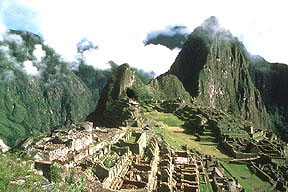A Hubble Space Telescope image of stars in the globular cluster M22.
Click on image for full size
NASA, ESA, and K. Sahu (STScI)
Stars
The pinpoints of light that you see in the night sky are stars. Your ability to see the stars depends on their
magnitude as seen from Earth. Stars are giant balls of gas in space that shine through the darkness.
The Sun is an average star that Earth orbits.
Check out some Star Statistics or visit the All Star Gallery to learn about specific stars.
You can visit these interesting ExploraTours that explain How to Build a Star and that take A Peek into the Lives of Stars. Also available is the A Peek Into the Lives of Stars Quiz!
You might also be interested in:

Astronomers use the term "magnitude" to describe the brightness of an object. The magnitude scale for stars was invented by the ancient Greeks, possibly by Hipparchus around 150 B.C. The Greeks grouped
...more
Created in the first three minutes after the Big Bang, hydrogen and helium gave rise to all other elements in the universe. Stars made this possible. Through nuclear fusion, stars generated elements such
...more
Astronomers announced today that they have discovered a "super-Earth" orbiting a red dwarf star only 40 light-years from Earth. They found this nearby planet with a small fleet of ground-based telescopes
...more
Everyone is awed by black holes. How could there be a thing that devours all light and matter around it...so that matter can never escape?!? Now, Dr. Tod Strohmayer, a scientist at NASA, has found that
...more
To date, 76 extrasolar planets are known. Yesterday, the first detection of an extrasolar planetary atmosphere was announced! As well, this is the first chemical analysis to be done on the atmosphere of
...more
NASA has just revealed its newest missions, Swift and FAME. These two projects are part of MIDEX, NASA's medium class explorer program. The agency had to choose from over 31 submitted proposals, which
...more
Peru's new president, Alejandro Toledo, was sworn in on July 28, 2001. The next day he took part in traditional ceremonies asking for the blessing of the Incan gods. Toledo is himself one of 16 children
...more















